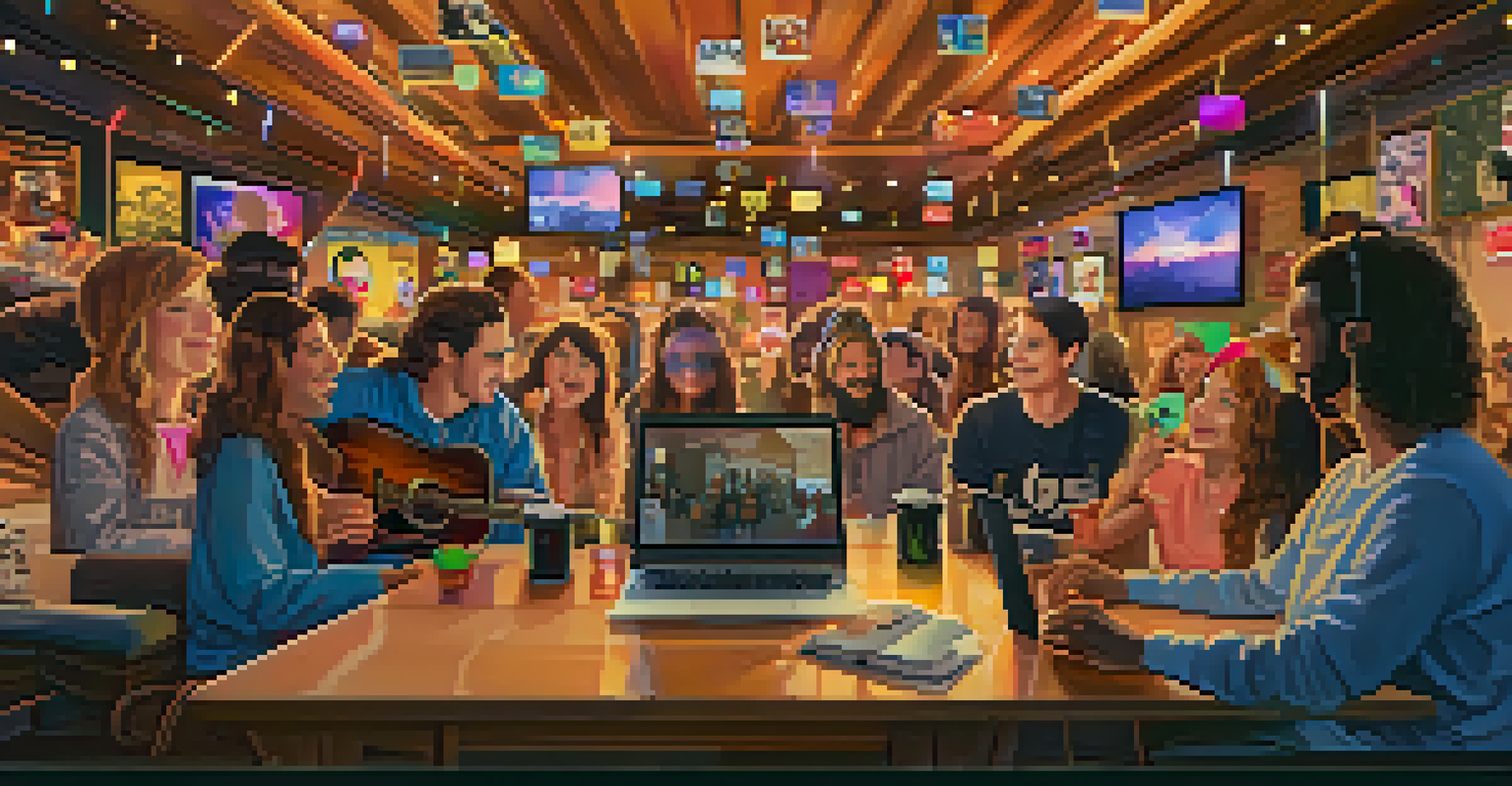The Future of Music Distribution in a Digital World

The Evolution of Music Distribution: A Brief Overview
Music distribution has come a long way from vinyl records and cassette tapes. In the past, artists relied on physical sales and radio play to reach their audience. However, with the rise of the internet, digital platforms have transformed how music is shared and consumed.
The music business is a cruel and shallow money trench, a long plastic hallway where thieves and pimps run free, and good men die like dogs. There’s also a negative side.
Today, streaming services like Spotify and Apple Music dominate the landscape, making it easier than ever for listeners to access millions of tracks with just a few clicks. This shift has not only changed consumer habits but also influenced how artists release their music and engage with fans.
As we look to the future, it’s essential to understand that these digital advancements are just the beginning. The next wave of music distribution will likely introduce even more innovative ways for artists to connect with their audiences.
The Rise of Streaming Platforms and Their Impact
Streaming platforms have revolutionized music distribution, allowing artists to reach global audiences without the need for traditional record labels. This accessibility has empowered independent musicians to share their work and gain traction in ways that were previously unimaginable.

However, with so many artists vying for attention, standing out on these platforms can be a challenge. Algorithms play a significant role in determining which songs are promoted, meaning that artists must not only focus on creating great music but also mastering the art of digital marketing.
Streaming Platforms Empower Artists
The rise of streaming services has enabled independent musicians to reach global audiences without traditional label support.
The future of music distribution will likely see even more personalized streaming experiences, where listeners receive tailored recommendations based on their preferences. This could lead to greater opportunities for niche artists to find their audience.
The Role of Social Media in Music Distribution
Social media has become a powerful tool for music distribution, allowing artists to connect directly with fans and share their work in real-time. Platforms like Instagram, TikTok, and Twitter have turned into essential marketing channels for musicians, enabling them to build their brand and promote new releases.
Music is the shorthand of emotion.
Through engaging content and interactive posts, artists can foster a loyal community that supports their music. This direct line of communication has made it easier for musicians to gauge fan reactions and adapt their strategies accordingly.
As social media continues to evolve, it will likely play an even more significant role in shaping music distribution. Expect to see new features and platforms that further bridge the gap between artists and their audiences.
The Emergence of Blockchain Technology in Music
Blockchain technology is making waves across various industries, and music distribution is no exception. By enabling transparent and secure transactions, blockchain can streamline royalty payments and ensure that artists are fairly compensated for their work.
This technology allows for direct transactions between artists and listeners, removing intermediaries and reducing costs. Imagine a world where artists receive immediate payment for each stream or download, enhancing their financial stability.
Social Media Connects Artists and Fans
Platforms like Instagram and TikTok allow artists to engage directly with fans, enhancing their marketing efforts and community building.
As more artists and platforms adopt blockchain solutions, we may see a shift toward decentralized music distribution models that prioritize fairness and transparency. This could empower more musicians to take control of their careers.
The Importance of Data Analytics in Music Distribution
Data analytics is becoming increasingly crucial in understanding audience behavior and preferences. By analyzing streaming metrics, social media interactions, and demographic information, artists can make informed decisions about their music and marketing strategies.
For instance, knowing which songs resonate most with listeners can help artists tailor their future releases and performances. Additionally, data can guide promotional efforts, ensuring that marketing resources are allocated effectively.
In the future, we can expect even more sophisticated analytics tools that provide deeper insights into audience engagement. This will enable artists to foster stronger connections with their fans and maximize their reach.
The Future of Live Music and Virtual Events
Live music has always been a significant aspect of the music industry, but the pandemic accelerated the adoption of virtual events. Online concerts and live streams have provided artists with new platforms to connect with fans, regardless of location.
As technology continues to advance, we may see more immersive experiences that blend virtual and augmented reality with live performances. This could create unique opportunities for fans to engage with their favorite artists in innovative ways.
Blockchain Ensures Fair Compensation
Blockchain technology facilitates transparent transactions, potentially revolutionizing how artists receive payments for their work.
Ultimately, the future of live music distribution will likely find a balance between in-person events and virtual experiences, catering to diverse audience preferences and expanding the reach of artists.
The Role of AI in Shaping Music Distribution
Artificial intelligence (AI) is increasingly influencing how music is created and distributed. From generating personalized playlists to predicting trends, AI has the potential to enhance the music experience for both artists and listeners.
For example, AI algorithms can analyze listener habits and provide recommendations that help users discover new music they might love. This not only benefits listeners but also helps artists gain exposure to new audiences.

As AI technology evolves, we can expect it to play an even more significant role in music distribution, enabling more precise targeting and engagement strategies for artists.
Conclusion: Embracing Change in Music Distribution
The future of music distribution in a digital world is undoubtedly exciting, filled with opportunities for artists and listeners alike. As technology continues to evolve, musicians will need to adapt and embrace new methods of sharing their work.
By leveraging streaming platforms, social media, blockchain, data analytics, virtual events, and AI, artists can create meaningful connections with their audiences. This adaptability will be key to thriving in the ever-changing landscape of music distribution.
Ultimately, the future holds immense potential for musicians ready to innovate and explore new avenues for reaching fans. Embracing these changes will not only benefit artists but also enrich the music experience for everyone.